Nav
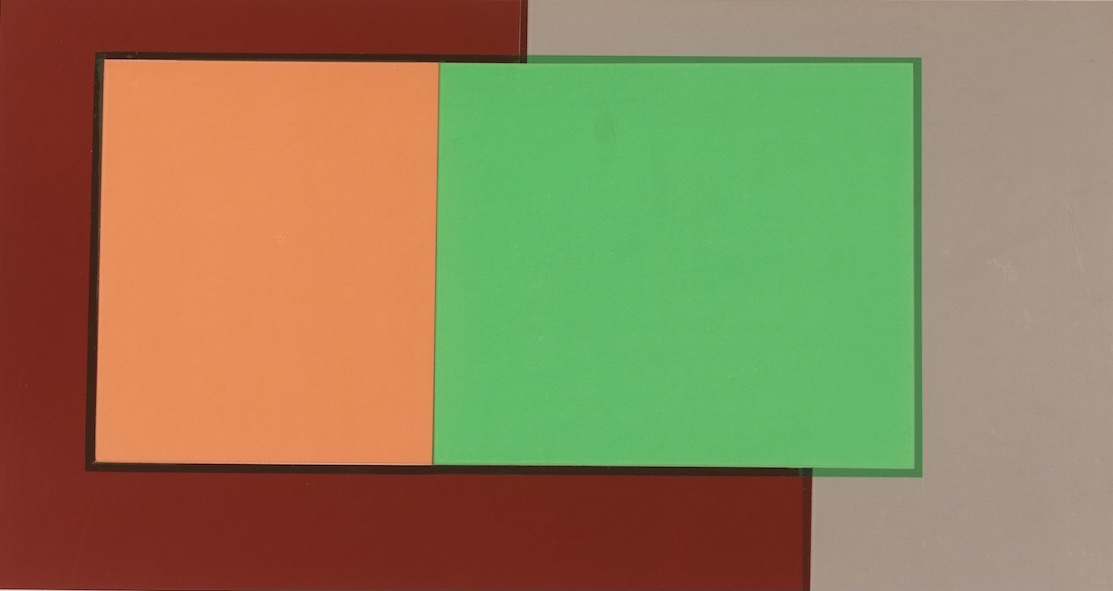
Untitled, c.1971, gouache and collage on card
The experimental use of collage by Pablo Picasso and Georges Braque was instrumental in breaking up traditional pictorial space. And although Golding did not pursue the medium for long, the trio of card collages from 1971 proved a decisive turning point in the direction of his work, which later turned to pastel and wax. The strength of composition is asserted in the bold colours as they take their places beside one other.
Credit line - On loan from the John Golding Artistic Trust
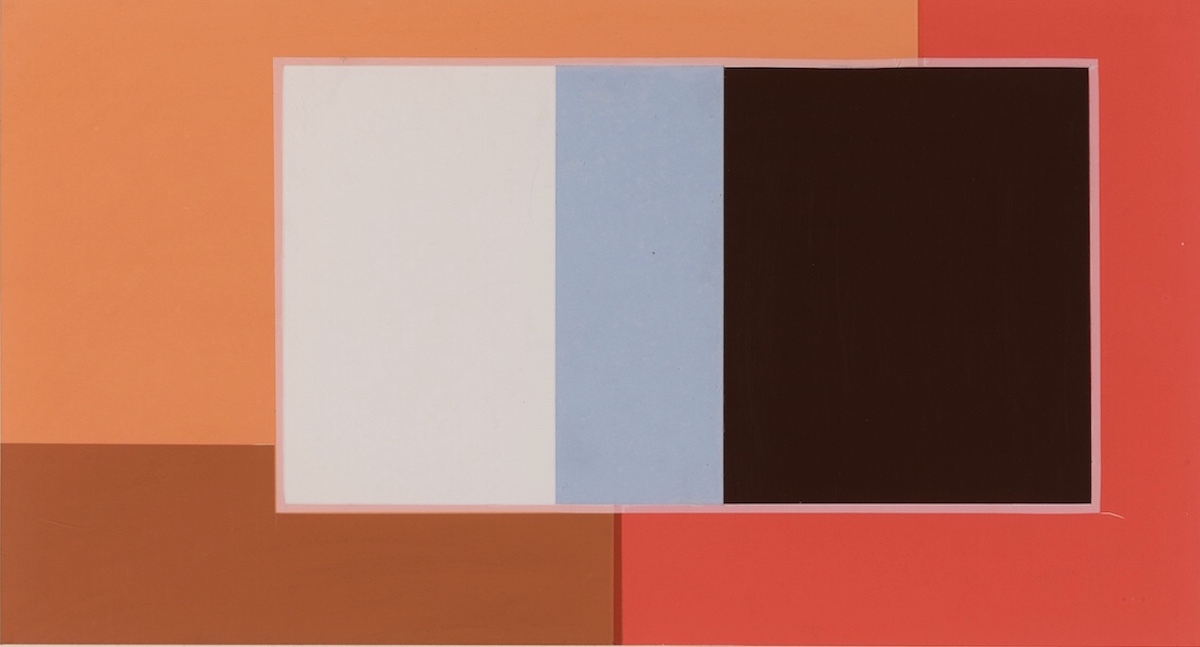
Untitled, c.1971, gouache and collage on card
These works of the early 1970’s display Golding’s understanding of contrast through geometric print. Here a base of flesh tones is divided by cool coloured panels. The large dark rectangle draws the viewers gaze and absorbs light from its surrounding shapes.
Credit line - On loan from the John Golding Artistic Trust

Untitled, c.1971, gouache and collage on card
This geometric composition of blues, purple, and peach displays Golding’s sensitive understanding of contrast. Gouache provides a concentration of pigment, drying matte upon the card to create clean, Mondrian style lines and solid blocks of colour. Using gouache, Golding has created some of his most opaque, linear works.
Credit line - On loan from the John Golding Artistic Trust
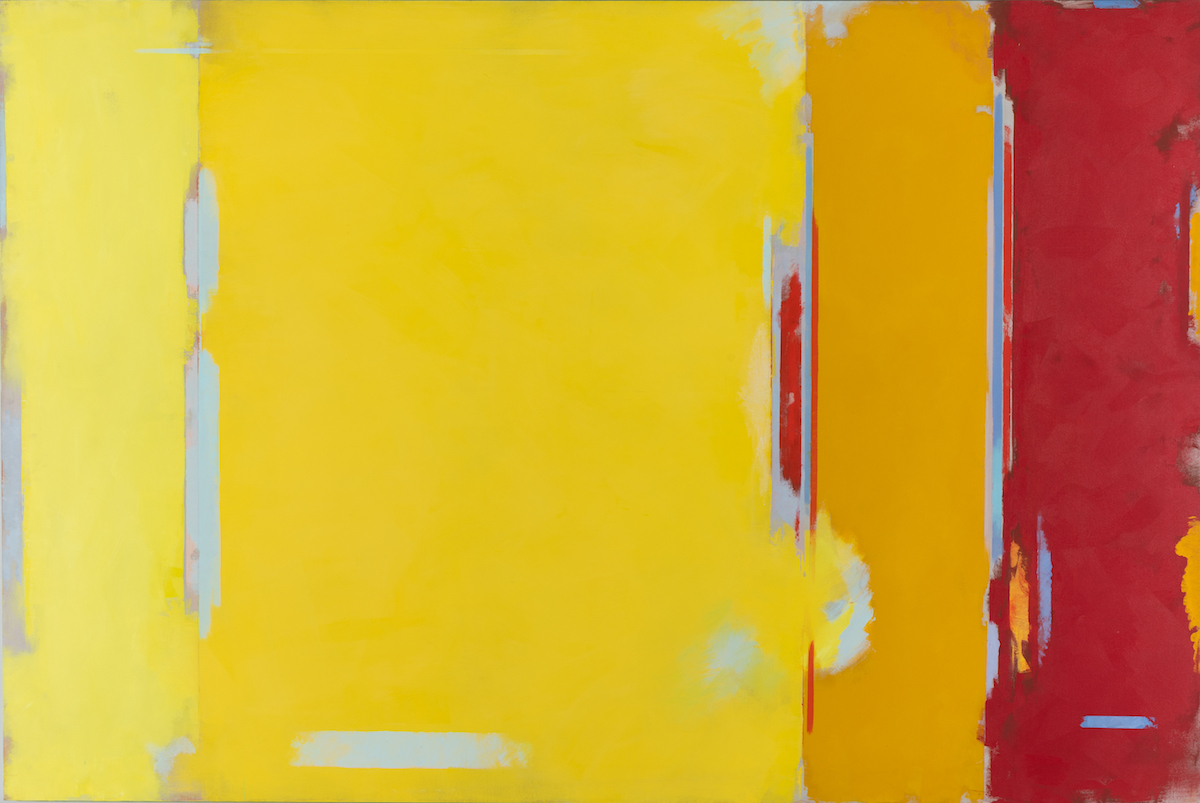
E (O.R.) II, 1976, acrylic on canvas
As with his earlier collages, Golding maintains a formality of shape in the large-scale E (O.R.) II, but with increasing depth. Rectangular blocks of red, gold, and yellow are evident here, but working with glossy acrylic paint, Golding has softened the edges. Luminous colours blur and begin to break apart, revealing thin streaks of blue and enriching the composition with freedom of emotion and movement. Golding would spend several months to produce a painting, so that each work developed its own psychological character.
Credit line - On loan from the John Golding Artistic Trust
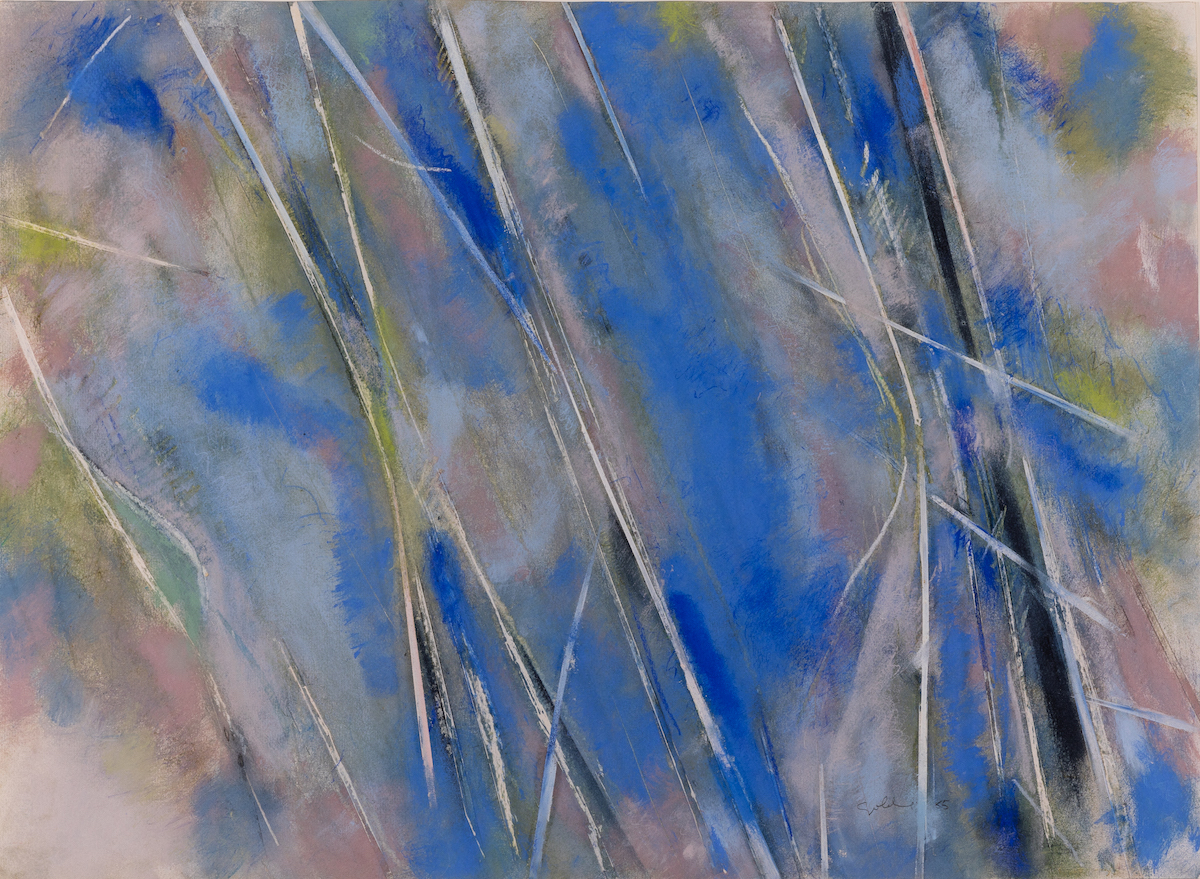
Untitled, c.1985, pastel on paper
The expressive strokes in this pastel reflect the mark making from Golding’s earlier figurative work from the 1950’s, when he rendered bodies with thick, dark lines of charcoal. Here, the gestural strikes return in vibrant colour. The composition extends to the perimeter of the canvas. Slashes of white across the surface lend structure to the soft, fine grain of pastel.
Credit line - On loan from the John Golding Artistic Trust
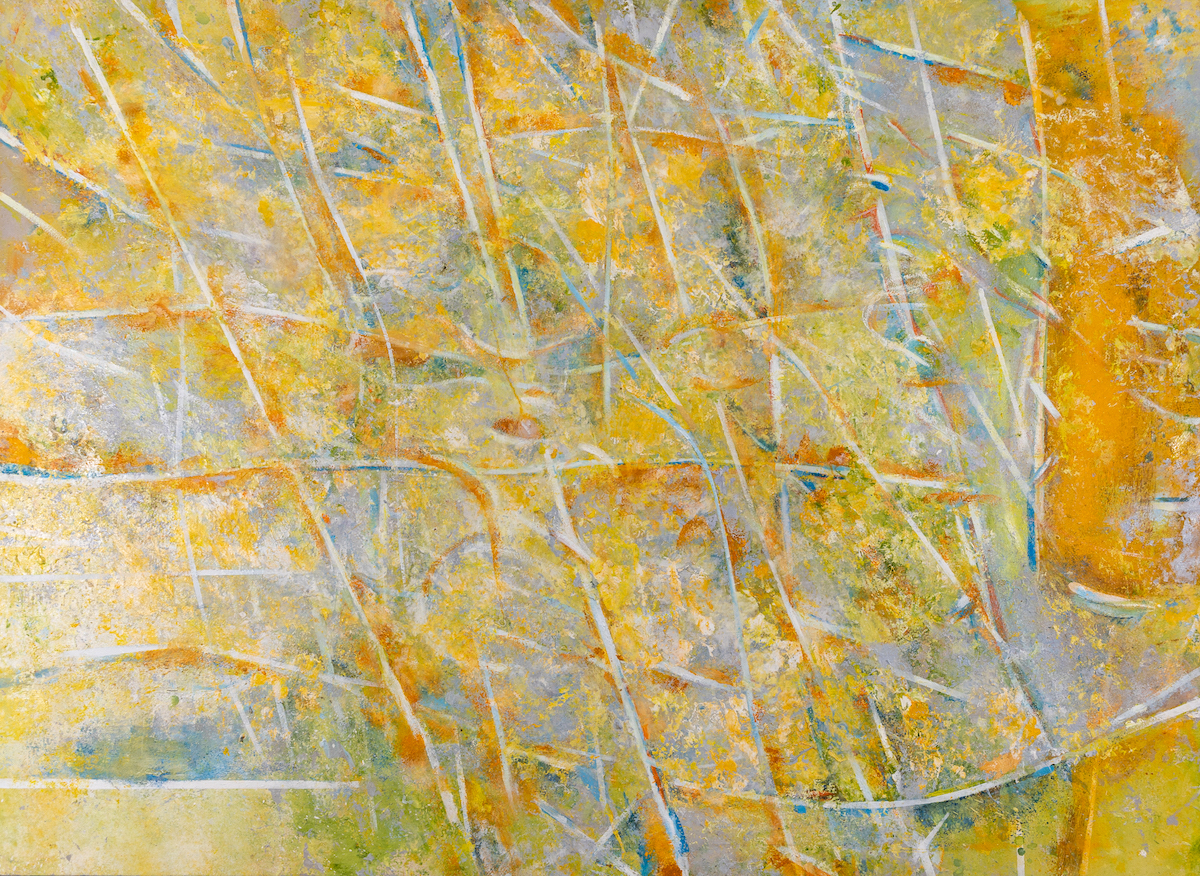
L.1 (Mirage), 1998-2000, acrylic on canvas
Golding’s large-scale expressionistic prowess is exemplified here as he creates depth by weaving slashes of white between contrasting warm and cool tones. The heavy application of yellow over blue evokes the rising heat of a desert mirage, as white lines appear to move like shards of refracted and shimmering light across the sand.
Colleagues often told Golding his work reminded them of the elements, whereas he insisted it was always about the body. In his later paintings Golding recreates the skin, saying that light “falls on the body and explores the surface”. The paint illuminates the intricacy, the scars, and the marks of experience over time.
Credit line - On loan from the John Golding Artistic Trust